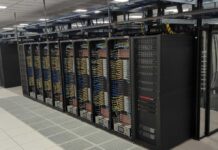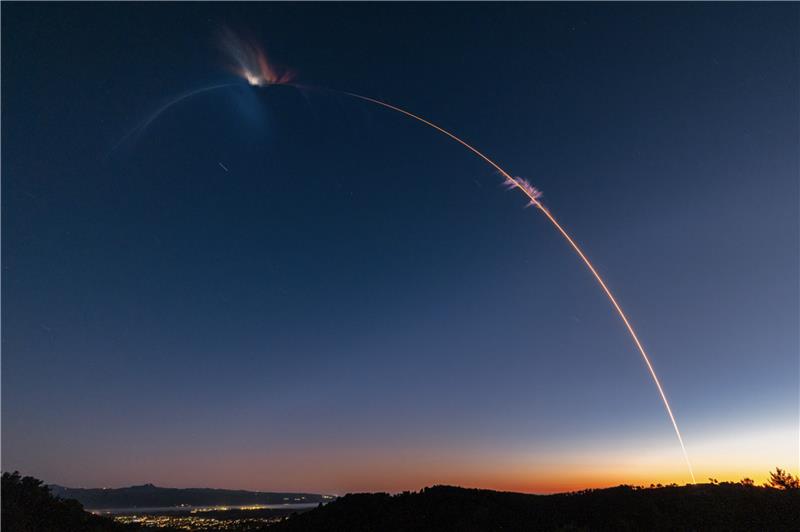Firefly Aerospace Successfully Launches Eight CubeSats for NASA’s CubeSat Launch Initiative
On July 3, Firefly Aerospace made headlines by successfully launching eight small satellites, known as CubeSats, as part of NASA’s CubeSat Launch Initiative. The launch took place at 9:04 p.m. PDT from Space Launch Complex 2 at Vandenberg Air Force Base in California, with the mission aptly named “Noise of Summer.” This launch marks a significant milestone in the CubeSat program, demonstrating the growing capabilities and cost-effectiveness of commercial space ventures.
Understanding CubeSats and Their Importance
CubeSats are miniature satellites that are typically used for space research. They are small, standardized, and modular, making them a cost-effective option for testing new technologies and conducting scientific experiments. The CubeSats launched in this mission were developed by various universities and NASA centers. These small satellites play a crucial role in advancing our understanding of space and Earth sciences, providing valuable data for climate studies, satellite technology development, and educational outreach programs.
The Launch: A Milestone for Firefly Aerospace
The successful launch of these CubeSats was carried out using Firefly Aerospace’s Alpha rocket. This mission, known as “Noise of Summer,” is a significant achievement for the company, showcasing their capabilities in the competitive space launch market. The Alpha rocket is designed to deliver small payloads to low Earth orbit, making it an ideal choice for missions like this one.
Firefly Aerospace’s successful completion of the Venture-Class Launch Services Demonstration 2 contract with NASA highlights the importance of venture-class contracts. These contracts are designed to provide launch opportunities for new and emerging launch service providers. By doing so, NASA aims to foster the growth of the commercial launch industry, encouraging innovation and competition. This approach not only helps reduce costs but also enhances the availability of launch services for future NASA missions.
NASA’s CubeSat Launch Initiative: A Gateway for Research
NASA’s CubeSat Launch Initiative (CSLI) is a program that offers a low-cost platform for universities, non-profits, science centers, and other research institutions to conduct scientific and technological experiments in space. Through this initiative, NASA aims to provide opportunities for educational institutions and research organizations to participate in space missions, thereby promoting STEM (Science, Technology, Engineering, and Mathematics) education and inspiring the next generation of scientists and engineers.
The CSLI program has been instrumental in enabling a wide range of scientific experiments and technology demonstrations. By providing access to space for smaller institutions and organizations, the program helps democratize space research and fosters innovation. The CubeSats launched in the “Noise of Summer” mission will contribute to various scientific fields, including climate studies, satellite technology development, and educational outreach.
The Broader Impact of CubeSat Missions
The successful launch of CubeSats by Firefly Aerospace under NASA’s CubeSat Launch Initiative is a testament to the collaborative efforts between commercial space companies and government agencies. This partnership is crucial for advancing space exploration and technology development. The data collected from these CubeSats will provide valuable insights into climate patterns, help test new satellite technologies, and engage students in hands-on space research.
In addition to scientific research, CubeSat missions also play a vital role in educational outreach. By involving students and educators in the design and development of CubeSats, these missions inspire the next generation of space enthusiasts and provide practical experience in space technology. This hands-on approach to learning helps bridge the gap between theoretical knowledge and practical application, preparing students for careers in the space industry.
Looking Ahead: The Future of CubeSat Missions
The success of the “Noise of Summer” mission paves the way for future CubeSat missions and highlights the growing capabilities of commercial space companies like Firefly Aerospace. As the commercial space industry continues to evolve, we can expect to see more innovative and cost-effective solutions for space exploration and research.
The CubeSat Launch Initiative will continue to play a pivotal role in this evolution, providing opportunities for a diverse range of organizations to participate in space missions. By fostering collaboration between government agencies, educational institutions, and commercial space companies, the initiative helps drive innovation and advances our understanding of space.
Good to Know: The Benefits of CubeSats
CubeSats offer several advantages over traditional satellites, including lower costs, shorter development times, and greater flexibility. These small satellites can be developed and launched at a fraction of the cost of larger satellites, making them an attractive option for research institutions and small businesses. Additionally, the modular design of CubeSats allows for rapid development and deployment, enabling researchers to quickly test new technologies and gather data.
Another significant benefit of CubeSats is their ability to operate in constellations. By deploying multiple CubeSats in a coordinated manner, researchers can gather data from different locations simultaneously, providing a more comprehensive understanding of various phenomena. This capability is particularly useful for climate studies, where data from multiple points can help create more accurate models and predictions.
Reactions and Reviews
The successful launch of the “Noise of Summer” mission has garnered positive reactions from the space community. Experts and enthusiasts alike have praised Firefly Aerospace for their achievement, highlighting the importance of commercial space ventures in advancing space exploration. The collaboration between NASA and Firefly Aerospace is seen as a model for future partnerships, demonstrating how government agencies and private companies can work together to achieve common goals.
In a statement, Firefly Aerospace expressed their excitement about the successful launch and emphasized their commitment to providing reliable and cost-effective launch services. The company’s CEO highlighted the importance of the Venture-Class Launch Services Demonstration 2 contract, noting that it has helped establish Firefly Aerospace as a key player in the commercial space industry.
NASA officials also lauded the successful launch, emphasizing the value of the CubeSat Launch Initiative in promoting scientific research and educational outreach. They reiterated their commitment to supporting commercial space companies and fostering innovation through programs like CSLI.
Conclusion
The successful launch of eight CubeSats by Firefly Aerospace as part of NASA’s CubeSat Launch Initiative is a significant milestone in the world of space exploration. This mission not only demonstrates the capabilities of commercial space companies but also highlights the importance of collaboration between government agencies and private enterprises. The data collected from these CubeSats will contribute to various scientific fields, while the educational outreach efforts will inspire the next generation of space enthusiasts.
As the commercial space industry continues to grow, we can expect to see more innovative and cost-effective solutions for space research and exploration. The CubeSat Launch Initiative will remain a key driver of this growth, providing opportunities for a diverse range of organizations to participate in space missions and advance our understanding of the universe.































![Samsung Developers Recommend 3 Top Good Lock Features [Exploring Good Lock ③] 3 Features Recommended by Samsung Developers and Newsroom Editors](https://www.hawkdive.com/media/samsung-mobile-good-lock-home-up-developers-and-editors-picks-wonderland-edge-lighting-and-nice-shot-218x150.gif)

